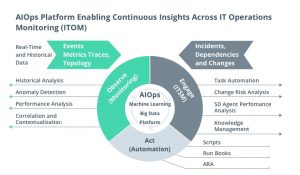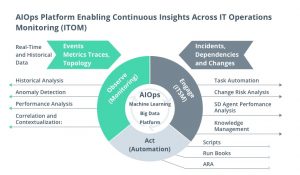Learn why a multi-cloud strategy is the new black and discover new approaches to the efficient management of a multi-cloud infrastructure
Anyone who has been involved in IoT, enterprise IT security, and cloud tech for long enough and at many levels has seen the rise of cloud services from their early days and their steady evolution into hybrid and especially multi-cloud variants.
Multi-cloud is the approach to building a cloud infrastructure made up of more than one cloud service from more than one cloud service provider, either public or private. Depending on the nature of a particular workload or task, it will get delegated to a cloud that is best suited to handle it from the technical and cost standpoints. In a way it’s really simple but, as always, the devil is in the detail.
Multi-cloud is already a reality, not something that we are yet to see. Enterprises are eagerly adopting this model, and not without reason. So what’s so great about a multi-cloud strategy?
Why a multi-cloud solution?
Major cloud platforms from Google, Amazon, and Microsoft offer super-impressive sets of hosting options, developer tools, and innovative cloud-based services. We all know what they are and most of us have used them for years because they are fast and convenient.
Unfortunately, there isn’t a cloud service platform that does everything, or that does everything equally well. While Amazon AWS excels in providing a slew of development tools and virtualization options, Microsoft Azure takes the lead in terms of AI and ML, and Google offers excellent pricing and delivers great value to new customers.
A multi-cloud infrastructure aims to provide organizations with the opportunity to save money and secure access to the widest selection of cloud tools and services. The rules may seem fairly straightforward: store large volumes of data in the cloud that provides the cheapest storage space and send your most resource-consuming workloads to the cloud with the best number-crunching capabilities. However, managing a multi-cloud setup is not quite that simple.
Key advantages of multi-cloud management solutions
The good news is that you are not bound to use a single cloud software development company for all of your cloud needs. Simultaneous use of multiple cloud services provides you with a number of tangible benefits:
- Cost savings
With several cloud providers at your disposal, you can balance your spending, making the most of platform-specific billing models and virtualization options, such as AWS spot instances and low-priority VMs in Azure. - Performance optimization
Access to multiple clouds with different performance profiles and SLAs makes it possible to quickly distribute the load between them and ensure a stable data throughput even during peak hours. - Data redundancy
The use of multiple clouds is a natural means of ensuring redundancy for fast and effective disaster recovery. When used as a failover solution, multiple clouds provide enterprises with a highly flexible, scalable, and instantly available backup for data and apps. - Access to the best cloud features without vendor lock-in
With a multi-cloud strategy in place, you enjoy the best features and services offered by each cloud vendor and avoid the so-called vendor lock-in — the excessive and risky reliance on a single provider. - Data governance and compliance
When you are legally obligated to comply with regional regulations, such as GDPR or CCPA, the use of multiple clouds can be a viable solution, taking care of both data residency and data governance requirements.
Depending on your business model and IT infrastructure, you can reap the benefits of using several clouds in a multitude of other ways. The key takeaway from switching to a multi-cloud strategy is the dramatically higher number of choices and degree of technical and financial flexibility at your disposal.
So, if multi-cloud is a one-size-fits-all solution, should you switch over without giving it a second thought?
Not exactly.
Main challenges of going multi-cloud
There are several negative aspects of going multi-cloud that every IT director or manager should be aware of:
- Security
The higher complexity of the multi-cloud configuration results in proportionately more stringent security requirements. Although cloud providers offer high-security services “out of the box,” the practice of dynamically distributing data and workloads between different clouds requires a solid, holistic approach to security. Reliance on several clouds elevates the importance of regular failover drills. - Management complexity
Any multi-cloud solution requires thoughtful and professional setup, configuration, and continuous oversight. With assets being stored in different clouds and workloads being assigned to varying cloud resources, orchestrating these processes becomes increasingly more difficult. You need to make sure that your IT staff are well versed in all relevant cloud platforms and can maintain an effective interplay between them. - Cost control
Even the use of a single cloud account can be confusing in terms of the recurring and ad hoc costs of services, subscription levels, quotas, etc. When you use two or three clouds in parallel, it is extremely important to control your spending and shuffle workloads around in an optimal manner. Your success in doing so will depend on your ability to access and analyze your consumption patterns. - Loss of vendor loyalty bonuses
It is not uncommon for cloud service providers to offer exclusive deals and rates to loyal clients. Those offers can include heavily discounted storage rates, priority service, or other perks. Switching to other cloud providers in addition to your primary one can mean that you will lose all your former privileges. Weigh your options before making the decision to switch.
Clearly, adopting a multi-cloud strategy is a challenge even for mature organizations. It requires meticulous planning, consideration of multiple factors, and a clear understanding of the ultimate goal. However, if done right, this transition may well become the best thing you’ve ever done to boost the potential of your IT infrastructure and make it ready for the future.
The growing role of AI in multi-cloud management
So, is there a way to automate cloud management or even keep those cloud infrastructures running autonomously? Fortunately, a lot of DevOps pundits out there want to improve multi-cloud orchestration and are working hard to make that happen. Today there is no doubt that the clouds of tomorrow will be partially or fully controlled by AI and that DevOps will evolve into AIOps.
Hardly anyone in the industry will argue that managing a massive multi-cloud infrastructure is a breeze. More often than not, it’s a lot like trying to play several musical instruments at once. With the snowballing amount of big data coming from various infrastructure elements, it becomes increasingly hard to react to issues timely and adequately, let alone make educated decisions regarding workload allocation and data re-routing.
AI-based automation aims to solve these issues by leveraging the power of advanced self-learning algorithms embedded at the core of cloud management solutions. Driven by machine learning, these algorithms excel in processing large volumes of monitoring data, detecting even the most subtle deviations from established policies, and taking proactive measures to eradicate operational inefficiencies.
This initiative gave birth to such remarkable concepts as AIOps and intent-based networking. The latter is a DevOps framework or operational paradigm that helps mold company-wide networking goals and rules into actionable policies. These are then used by AI-based network management tools for ongoing monitoring, issue detection, scaling, troubleshooting, and self-healing. In multi-cloud environments, the speed of reaction and the ability to automatically resolve issues at an early stage are the most important factor ensuring operational stability of a complex, dynamically changing infrastructure.
There is no doubt that with time, the importance of AI-powered network management solutions will grow, as will the adoption of intent-based networking. These new approaches to managing multi-cloud environments provide companies with never-before-seen flexibility, agility, and insight into their physical and virtual network assets, while reducing risks and lowering the maintenance overhead.
So, is it time to go multi-cloud?
To answer the question from the title — yes, the multi-cloud strategy does pay off, in a big way. It is a fail-safe method of overcoming the functional or cost limitations of a single cloud, and more and more companies will embrace it for operational effectiveness and long-term cost savings. Its adoption does pose some challenges, but these are clearly outweighed by the benefits. The increasing complexity of cloud-based networks, including multi-cloud and hybrid models, will inevitably bring intelligent, AI/ML based management tools to the forefront and make AIOps the DevOps of the future.
Read the original article here. Read more about Intellias here.





